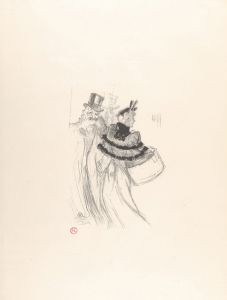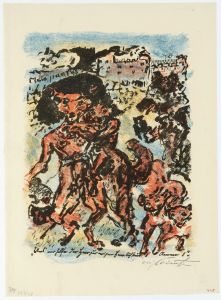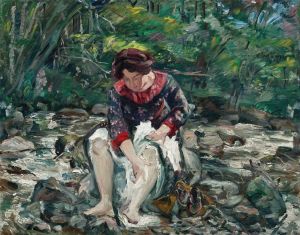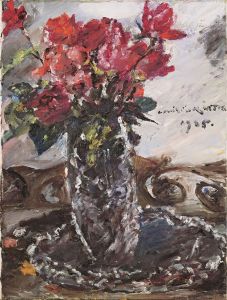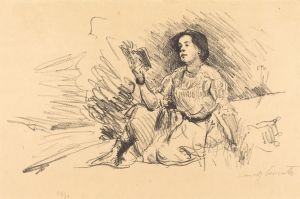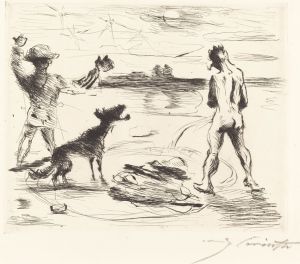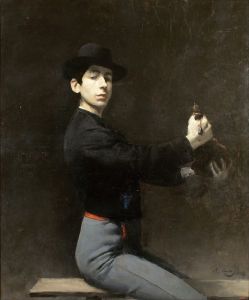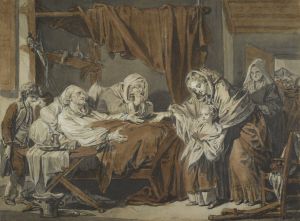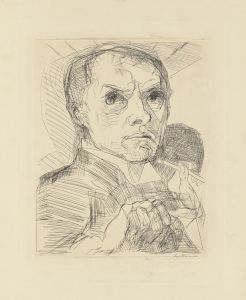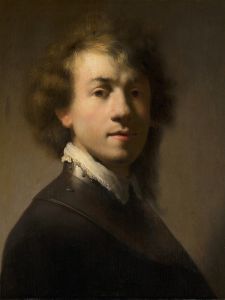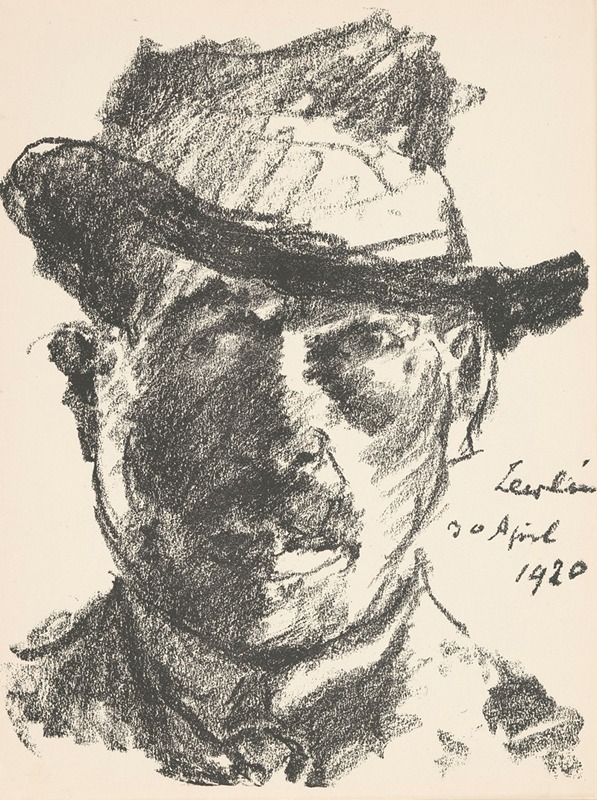
Zelfportret Lovis Corinth
A hand-painted replica of Lovis Corinth’s masterpiece Zelfportret Lovis Corinth, meticulously crafted by professional artists to capture the true essence of the original. Each piece is created with museum-quality canvas and rare mineral pigments, carefully painted by experienced artists with delicate brushstrokes and rich, layered colors to perfectly recreate the texture of the original artwork. Unlike machine-printed reproductions, this hand-painted version brings the painting to life, infused with the artist’s emotions and skill in every stroke. Whether for personal collection or home decoration, it instantly elevates the artistic atmosphere of any space.
Lovis Corinth, a prominent German painter and printmaker, created several self-portraits throughout his career, reflecting his evolving style and personal experiences. One of his notable self-portraits is "Zelfportret" (Self-Portrait), which showcases his mastery in capturing human emotion and character.
Lovis Corinth was born on July 21, 1858, in Tapiau, East Prussia (now Gvardeysk, Russia). He studied at the Academy of Fine Arts in Königsberg and later at the Academy of Fine Arts in Munich, where he was influenced by the naturalistic style of painting. Corinth's early works were characterized by a realistic approach, but he gradually embraced Impressionism and later Expressionism, which is evident in his self-portraits.
The "Zelfportret" by Lovis Corinth is a compelling example of his mature style. Painted in 1924, this self-portrait was created after Corinth had suffered a stroke in 1911, which left him partially paralyzed on his left side. Despite this physical setback, Corinth continued to paint with remarkable vigor and intensity. The self-portrait reveals his resilience and determination as an artist.
In this painting, Corinth presents himself with a direct and penetrating gaze, confronting the viewer with a sense of immediacy and introspection. The brushwork is vigorous and expressive, capturing the texture of his skin and the intensity of his eyes. The use of color is bold and dynamic, with a rich palette that adds depth and vitality to the portrait. The background is relatively simple, allowing the focus to remain on the artist's face and expression.
Corinth's self-portraits often explored themes of mortality, identity, and the passage of time. This particular self-portrait is no exception, as it reflects his contemplation of his own aging and the physical challenges he faced. The painting is a testament to his enduring spirit and his ability to convey profound human emotions through his art.
Throughout his career, Lovis Corinth was a prolific artist, producing a vast body of work that included portraits, landscapes, still lifes, and historical scenes. He was a member of the Berlin Secession, an influential group of artists who sought to break away from traditional academic art and embrace modernist approaches. Corinth's contributions to the art world were significant, and his self-portraits remain some of his most personal and revealing works.
Lovis Corinth passed away on July 17, 1925, in Zandvoort, Netherlands. His legacy continues to be celebrated, and his self-portraits, including the "Zelfportret," are regarded as important examples of early 20th-century German art. These works offer a glimpse into the artist's soul, capturing his struggles, triumphs, and unwavering dedication to his craft.






